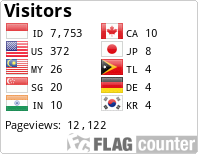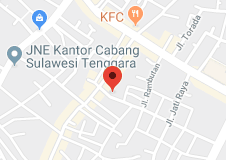Gambaran Kadar Asam Urat Pada Penderita Diabetes Mellitus Tipe 2 di Rumah Sakit Umum Daerah Kota Kendari
Abstract
ABSTRAK
Diabetes Mellitus tipe 2 adalah penyakit gangguan metabolik yang di tandai oleh kenaikan gula darah akibat penurunan sekresi insulin oleh sel beta pankreas dan atau ganguan fungsi insulin (resistensi insulin). Hubungan asam urat dengan Diabetes Mellitus tipe 2 yaitu disebabkan oleh resistensi insulin, dimana pada asam urat akan meningkatkan reabsorbsi sodium di tubulus ginjal, sebagai akibatnya kemampuan ginjal mengekskresi sodium dan asam urat meningkat. Tujuan dari penelitian ini adalah untuk mengetahui gambaran kadar asam urat pada pasien Diabetes Mellitus tipe 2 di Rumah Sakit Umum Daerah Kota Kendari. Penelitian ini dilakukan pada Bulan Juli 2017. Jenis penelitian yang digunakan adalah deskriptip analitik. Sampel diambil secara probabilitas sampling menggunakan teknik random sampling sebanyak 26 orang penderita sesuai kriteria inkulusi. Hasil pemeriksaan terhadap 26 sampel pasien Diabetes Mellitus tipe 2, pasien dengan hasil asam urat tinggi (Heperurisemia) sebanyak 84,61% dengan jumlah pasien 22 orang, yang terdiri atas laki-laki sebanyak 10 orang (38,46%) dan perempuan sebanyak 12 orang (46,15%). Sedangkan pasien dengan hasil kadar asam urat normal sebanyak 15,38% dengan jumlah pasien 4 orang, yang terdiri atas laki-laki sebanyak 2 orang (7,69%) dan perempuan sebanyak 2 orang (7,69%).
Kata kunci : Asam urat, Diabetes Mellitus tipe 2, RSUD Kota Kendari.
ABSTRACT
Diabetes Mellitus type 2 is a metabolic disorder disease characterized by increased blood sugar due to decreased insulin secretion by pancreatic beta cells and / or insulin function disorders (insulin resistance). The association of uric acid with type 2 Diabetes Mellitus is caused by insulin resistance, which in uric acid increases sodium reabsorption in the renal tubules, as a result the kidneys' ability to excrete sodium and uric acid increases. The purpose of this study was to determine the description of uric acid levels in patients with type 2 Diabetes Mellitus at Kendari Regional General Hospital. This research was conducted in July 2017. The type of research used is analytic descriptive. Samples were taken by probability sampling using random sampling technique as many as 26 people suffer according to inclusion criteria. Results of examination of 26 samples of patients with Diabetes Mellitus type 2, patients with high uric acid (Heperurisemia) were 84.61% with 22 patients, consisting of 10 men (38.46%) and 12 women people (46.15%). While patients with normal uric acid yield as much as 15.38% with the number of patients 4 people, consisting of men as many as 2 people (7.69%) and women as many as 2 people (7.69%).
Keywords: Uric acid, Diabetes Mellitus type 2, RSUD Kendari City
Additional Files
Published
Issue
Section
License
Authors who publish on JAKK can share their research in a number of ways. JAKK does not impose an embargo on published journals, meaning that researchers can access it openly after the article is published. Researchers who have subscribed to access to articles can also share.
JAKK already uses the Open Journal System (OJS) thereby enabling the final version of all published research articles to be placed in any digital archive immediately after publication. JAKK can automatically make feeds of open access articles available to any repository that wishes to receive them.
Authors who publish with this journal agree to the following terms:
* Authors retain copyright and grant the journal right of first publication, with licensed under a Creative Commons Attribution ShareAlike 4.0 International License (CC BY-SA 4.0) that allows others to share the work with an acknowledgement of the work's authorship and initial publication in this journal.
* Authors are able to enter into separate, additional contractual arrangements for the non-exclusive distribution of the journal's published version of the work (e.g., post it to an institutional repository or publish it in a book), with an acknowledgement of its initial publication in this journal.
* Authors are permitted and encouraged to post their work online (e.g., in institutional repositories or on their website) prior to and during the submission process, as it can lead to productive exchanges, as well as earlier and greater citation of published work.







2.jpg)

